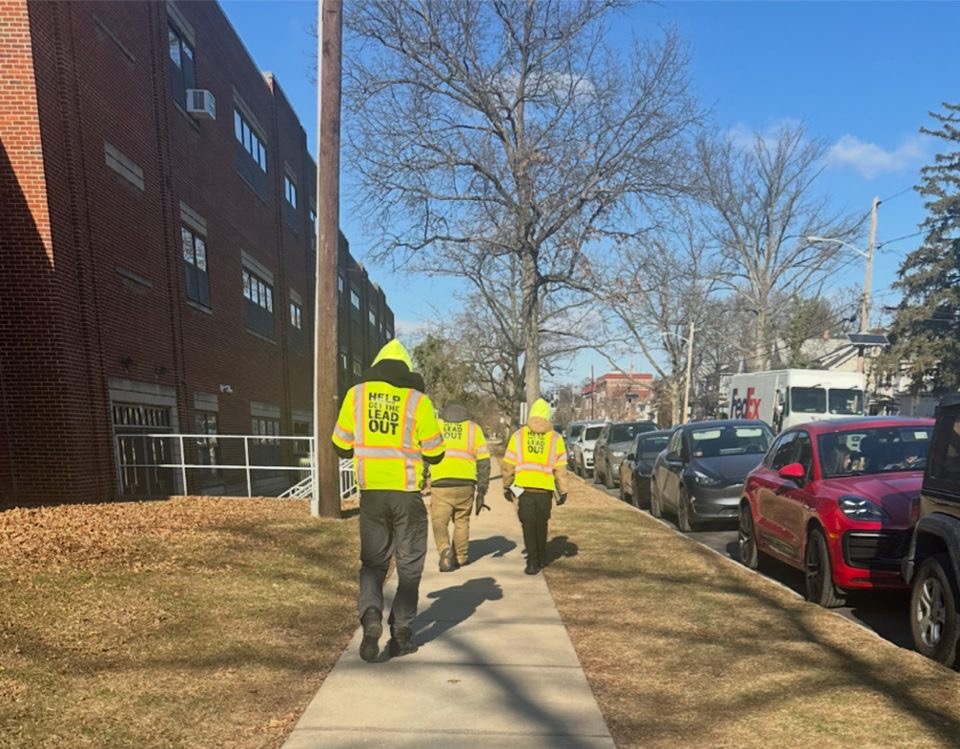On Monday, Feb. 3, many students and faculty members noticed a strange scent infecting the WHS hallways. The culprit of the stench was a burst sewage pipe below the boys’ bathroom in the main hallway. That Friday, fecal fumes forced many classes in the front hallway to be moved to the auditorium for the day, causing students and faculty to worry.
“It’s a waste pipe. It’s a health hazard, and I, in good conscience, have a hard time having students and staff in the building,” said Secretary Margaret Hunter at the time of the issue.
According to the Wisconsin Department of Health Services, exposure to sewage fumes can lead to dizziness and loss of consciousness in extreme cases. Despite the circumstances being different for WHS, the existence of the fecal matter, being present for five days, raises concern.
English Teacher Katherine Hickey recalled, “The smell was so overpowering that it was a disruption to the day and the learning environment. I think it could have been avoided if it was communicated more clearly and handled in a more efficient manner, especially considering the fact that there are almost 2,000 people in this building, all with different unique health conditions.”
In an email to the parents and faculty on Feb. 9, Acting Principal William Loughran announced that due to proper ventilation the odor had vacated the premises and the cracked pipe would be fixed on Feb. 10.
This is one of four environmental concerns that have developed over the course of the school year. In addition to the recent sewage concerns, WHS has seen heightened counts of volatile organic compounds, molds and lead-laden drinking water.
The school tested for the presence of VOCs this past October, which are emitted gases containing chemicals that mainly come from paint and cleaning supplies according to the U.S. Environmental Protection Agency.
Detail Associates, Inc. conducted a routine check for the presence of 72 VOCs in the gymnasiums and main office area and found a low count of radon present and thus a low risk of radon exposure, according to the lab report. It further concluded that based on the information obtained from data and indoor air quality testing, there are no environmental hazards or recognized environmental conditions associated with this site. Although there are some elevated levels of VOCs within certain areas of WHS, small amounts of VOCs are natural in both indoor and outdoor environments; in this case, the amounts are not enough to require action or directly put the health of WHS students and staff in jeopardy.
Also in October, the district responded to a request from WHS faculty members by conducting a microbial inspection for common outdoor molds within the building. While awaiting lab results to disclose the identity of the substances, the administration supplied air purifiers to the secretaries in the main office.
Hunter described the district as being “very responsive” to the faculty concerns about the mold. “The teachers had requested the testing in the first place. The communication between the teachers and the district were the driving force,” Hunter said.
LEW Environmental Services found traces of various forms of outdoor mold in three main locations throughout the building: the supply room in the main office, a mechanical room and a second floor bathroom closed off to students.
The main types of mold found were Penicillium/Aspergillus, Cladosporium and Stachybotrys. While the first two are natural molds that can only cause heightened allergy and asthmatic symptoms at slightly elevated levels, the latter, also known as black mold, can cause more severe health concerns. The amounts of Penicillium/Aspergillus and Cladosporium present in the tested locations fell just above normal levels while the amount of Stachybotrys found was miniscule in comparison and far below a concerning level. Fortunately, with routine testing procedures in place, all infected areas underwent some simple recommended cleaning measures and small renovations, but do not pose a health threat to WHS.
The fourth and final environmental hazard addressed in WHS this year so far was the concentration of lead in the drinking water pipes throughout the building. While in December New Jersey experienced a statewide emergency of contaminated water, the problems that occurred in WHS were different. The threat at WHS involved an elevated lead concentration entering water through the corrosion of pipes.
According to the lab reports provided by Westchester Environmental, LLC, the three locations of concern were the faculty dining room, the kitchen and the library multi purpose room, with lead levels of 20.8 ppb, 28.7 ppb and 19.1 ppb, respectively. In comparison to the 15.5 ppb standard set by the EPA, Westchester Environmental suggested that action was required.
Although the water is now safe to drink, there are many other potential confounding variables that may have impacted the test results, such as the frequency of water sample tests as well as whether the tested locations had pipes that were independent or interconnected to other pipes throughout the building.
Also, the lab report describes the EPA standard for lead as “non-health based,” meaning the standard, 15.5 ppb, is based on the level of lead that current treatment technologies can achieve. For health-based reasons, the EPA is proposing a lower standard of 10 ppb for 2027, according to the Natural Resources Defense Council.
Although this appears to be a great health concern, most members of the WHS community are at a low risk of experiencing lead poisoning. The most at risk groups are pregnant women, infants and children under the age of six, according to the Center of Disease Control and Prevention.
Sophomore Rosalie Troup was unaware of the extent of the issue, explaining that she was not informed of the test results that were sent out to faculty and parents in the district. Although Troup is not entirely comfortable with drinking water from the WHS water fountains, she feels as though she has no other choice. “I’m not going to pay $2 for a water bottle at the cafeteria,” said Troup.
Many students like Troup wish they received a direct notification from the administration regarding accessibility of the test results, as many are still unaware of the hazardous lead levels.
All of the aforementioned environmental concerns WHS has experienced this year have been addressed as a result of the vocal faculty and a responsive district. In order to address concerns regarding the state of environmental health in the building, the administration “encourages any student or staff member to report any concerns to the building principal,” said Coordinator of School and Community Relations Mary Ann McGann. “The district is committed to taking all necessary steps to maintain a safe and healthy environment for students and staff at WHS.”

